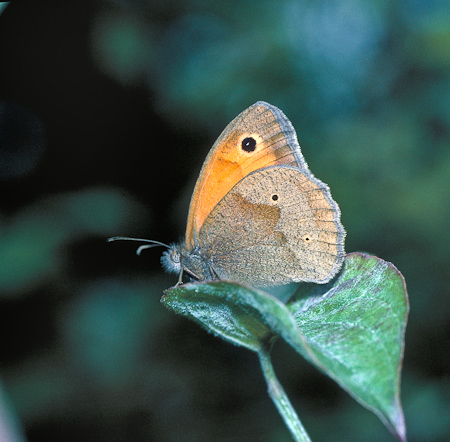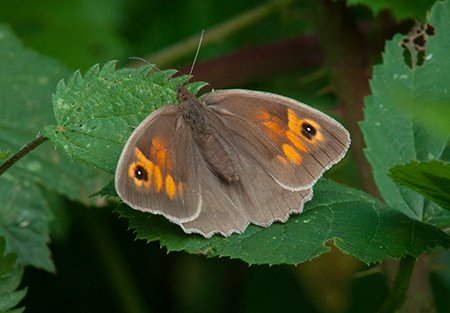Butterflies
Skippers
Whites
Hairstreaks
Blues and Coppers
Admirals
Vannesids
Fritillaries
Browns
Emergence
| Year | First | Final |
| 1976 | ||
| 1977 | ||
| 1978 | ||
| 1979 | ||
| 1980 | ||
| 1981 | ||
| 1982 | ||
| 1983 | ||
| 1984 | ||
| 1985 | June 20 | Sept 11 |
| 1986 | ||
| 1987 | ||
| 1988 | ||
| 1989 | ||
| 1990 | ||
| 1991 | ||
| 1992 | ||
| 1993 | ||
| 1994 | ||
| 1995 | ||
| 1996 | ||
| 1997 | ||
| 1998 | ||
| 1999 | ||
| 2000 | ||
| 2001 | ||
| 2002 | ||
| 2003 | ||
| 2004 | ||
| 2005 | ||
| 2006 | ||
| 2007 | ||
| 2008 | ||
| 2009 | ||
| 2010 | ||
| 2011 | ||
| 2012 | ||
| 2013 | ||
| 2014 | ||
| 2015 | ||
| 2016 | ||
| 2017 | ||
| 2018 | ||
| 2019 | 28th May | Sept 25th |
| 2020 | ||
| 2021 | 27 April BR1 | |
| 2022 |
Submit Your Records & Comments Here
Map of area covered for records
Butterfly Survey 1976-2020
Meadow Brown


Male: topwing plainer brown, underside plainer wingspan 40mm
Female larger and more marked, wingspan 45mm
Field notes: very variable, from almost white (Chalmers Hunt - personal conversation 1978) to dark brown, with additional or missing eyespots. Unlikely to be mistaken for any other butterfly except from late July or August when the smaller Gatekeeper butterfly emerges.
Habit: This VERY common brown butterfly can be seen almost everywhere there is a wild meadow, park, large garden or neglected grassland patch. The butterfly almost always flies low among the grasses in a lazy fashion, resting frequently. The male butterfly is smaller and darker and perhaps more urgent in flight. The butterfly is generally found in loosely attached colonies on suitable ground.
History: Years not recorded of this species, not significant due to its prevalence. However, for the sake of reference in respect of climate change, emergence dates from the first part of the study are included. Eric Philp for the Kent Field Club quotes 7th June as their earlist record and the 10th September as the last sighting 1980-1995. Modern records show a phenomenal change reflecting the high and widespread population density of the butterfly - the 2019 record succeeded by 2021 - the earliest of 27th April in North Bromley.
*May 2020 was the sunniest calendar month on record with 266 hours of sunshine, beating the previous record of 265 hours in June 1957. It has been the driest May in England and second driest in Wales with 9.6mm and 14.3mm respectively, which are both just 17% of the average rainfall for May. August 4th -17th presented cool and wet conditions
Butterfly, probably continuously brooded - Graham Collins - (univoltine) Butterflies of surrey and can be seen on the wing from early summer onwards in two more or less merged phases lasting well into late summer.
Larval Foodplant: grasses
Status: very common in all areas - stable, not under threat.
By Rodney Compton
